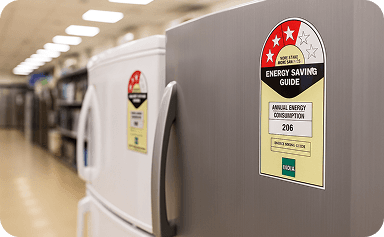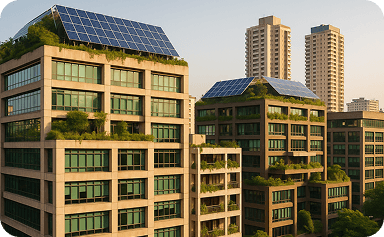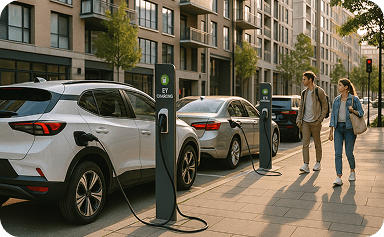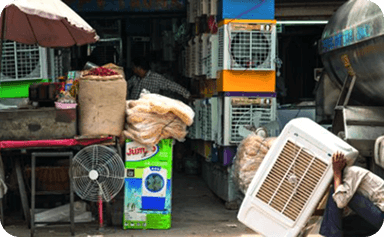We use cookies on this site to enhance your user experience.
By clicking the Accept button, you agree to us doing so.


India is the third-largest energy consumer globally, and its total energy demand is projected to increase by nearly 35% by 2035. Rapid urbanization, industrial growth, and rising incomes are driving this surge. Electricity demand alone is expected to almost double by 2040, with peak demand reaching 335 GW by 2030. Without aggressive efficiency measures, this growth will strain the grid, increase costs, and lock in fossil fuel dependency.

India has pledged to reduce the emissions intensity of its GDP by 45% by 2030 and achieve net-zero emissions by 2070. Energy efficiency is emerging as the single largest contributor to these targets, capable of delivering over 40% of the desired emissions reductions globally over the next 20 years. Without efficiency, India would need far more renewable capacity and carbon capture to stay on track—at much higher costs.

India imports over 85% of its crude oil and 50% of its natural gas, making it vulnerable to global price shocks and supply disruptions. By reducing overall energy demand through efficiency, India can lower its import dependence, improve its trade balance, and enhance energy security. This is critical for a country that spends billions annually on energy imports.

Energy efficiency is often called the “first fuel” delivering the most cost-effective way to meet the rapidly growing energy needs. Energy Efficiency has already delivered total savings of approximately USD 23 billion in 2022-23 alone. For consumers, efficiency measures can cut energy bills by 20–30%, freeing up household income and improving competitiveness for businesses.

India aims to install 500 GW of renewable energy capacity by 2030, but integrating this variable power into the grid is challenging. Energy efficiency reduces peak demand and makes the grid more flexible, allowing renewables to play a bigger role without compromising reliability. Efficiency also reduces the need for costly grid upgrades and storage, making the clean energy transition faster and more affordable.

Under its G20 presidency, India successfully championed the global pledge to double the rate of energy efficiency improvement by 2030. With an energy import bill that frequently exceeds $250 billion annually, enhancing efficiency is crucial for strengthening energy security, reducing economic vulnerability to price shocks, and meeting its ambitious Nationally Determined Contributions (NDCs) under the Paris Agreement.
Historically, India has demonstrated decoupling of economic growth from energy consumption. The country's energy intensity has been on a consistent downward trend –successfully reduced the energy intensity of its economy by over 35%, between 2005 and 2022, while the GDP grew more than double during the same period.
The efforts led by the Bureau of Energy Efficiency (BEE) on several key sectors include:
1
Perform, Achieve and Trade (PAT) Scheme: India’s flagship program sets mandatory energy reduction targets for the most energy-intensive industries (like aluminum, cement, steel, thermal power plants). Industries that overachieve their targets can sell energy-saving certificates to those who underachieve.


Standards and Labeling (S&L): A "Star Rating" program gives energy efficiency rating based on energy performance for 40 appliances like air conditioners, refrigerators, fans etc. The program continuously tightens standards, pushing manufacturers to produce more efficient products.
2
3


4
5
Street Lighting National Programme (SLNP): A massive initiative to replace conventional streetlights with energy-efficient LEDs, leading to huge energy savings for cities.


1
Partnered with Bureau of Energy Efficiency India on strengthening energy efficiency commitments within G20 outcome.


It presents opportunities to accelerate energy efficiency progress across buildings, industry, transport, finance for energy efficiency and behavioural and lifestyle changes to support the G20 Energy Transition Working Group deliberations.
2
3
Provide in-country technical assistance on a wide set of initiatives to elevate, support and invest in energy efficiency at national and sub-national level in India.

*The data is for the financial year 2020–21.*The boundaries and names shown and the designations usedon this map do not imply official endorsement or acceptance by the United Nations.



Alliance for an Energy Efficient Economy (AEEE), is one of the leading organisation in India that works on creating awareness about energy efficiency as a resource. AEEE supports policy implementation and is an energy efficiency market enabler with a not-for-profit motive. We promote data-driven and evidence-based energy efficiency policies and research.
